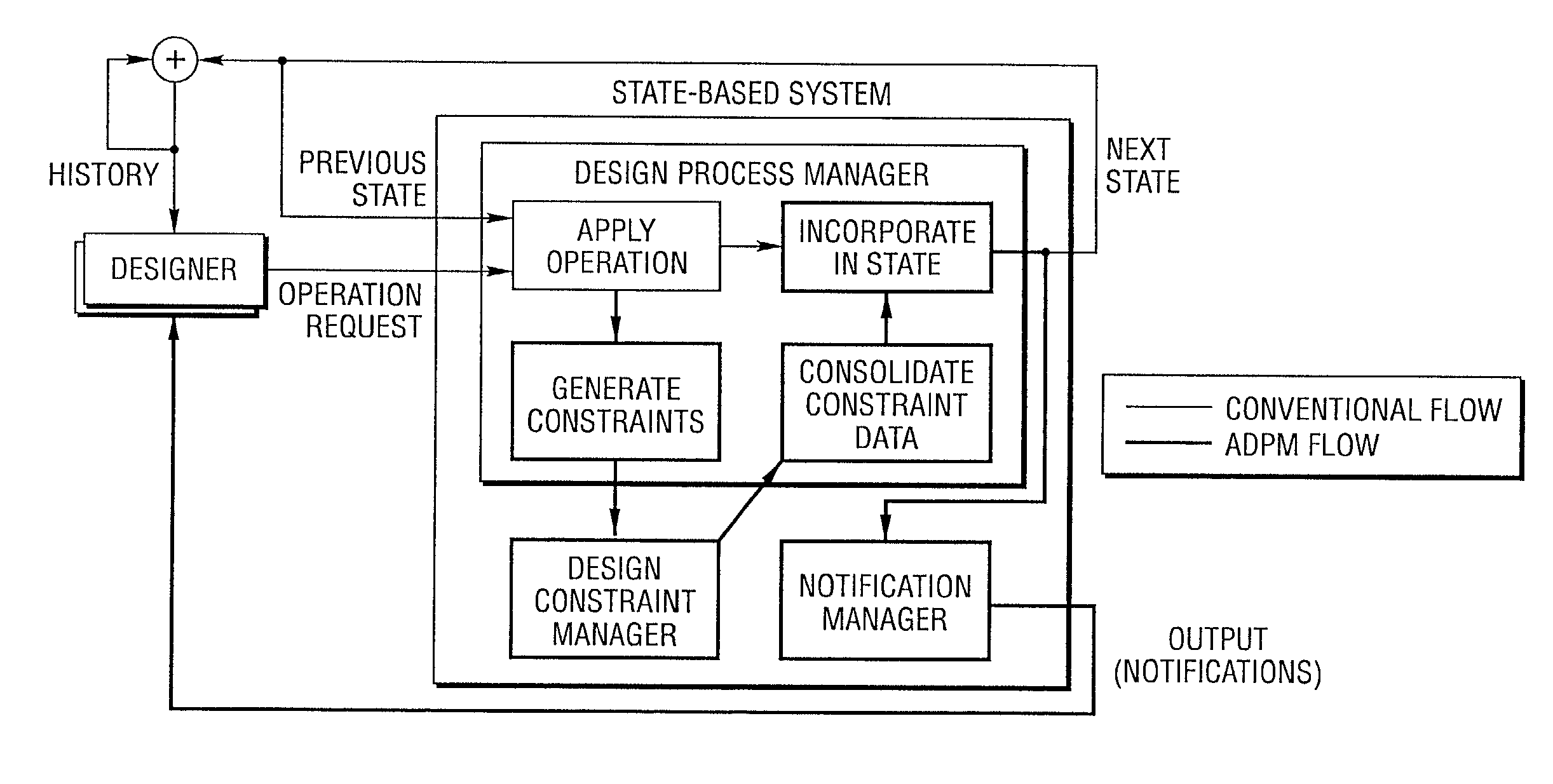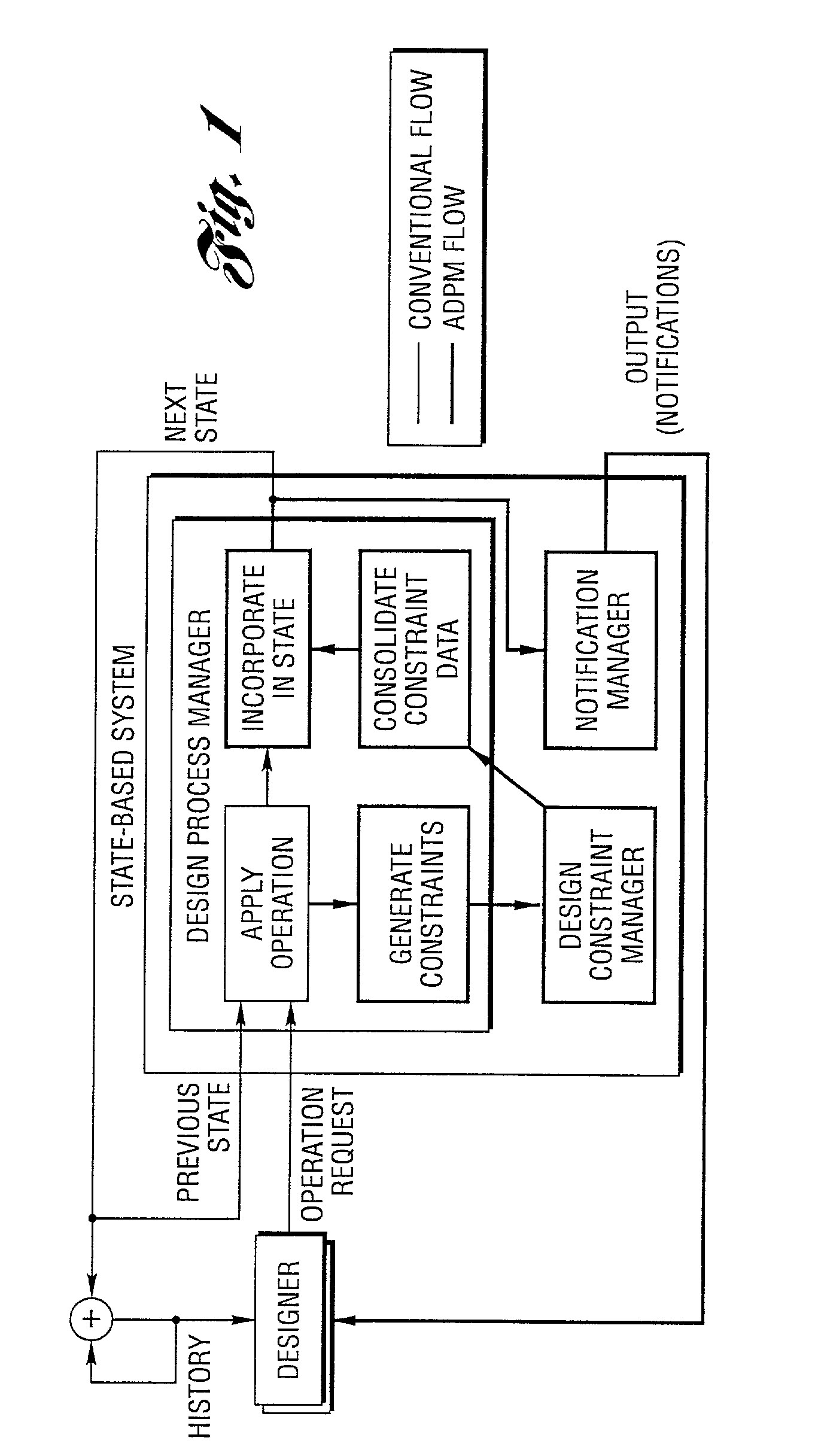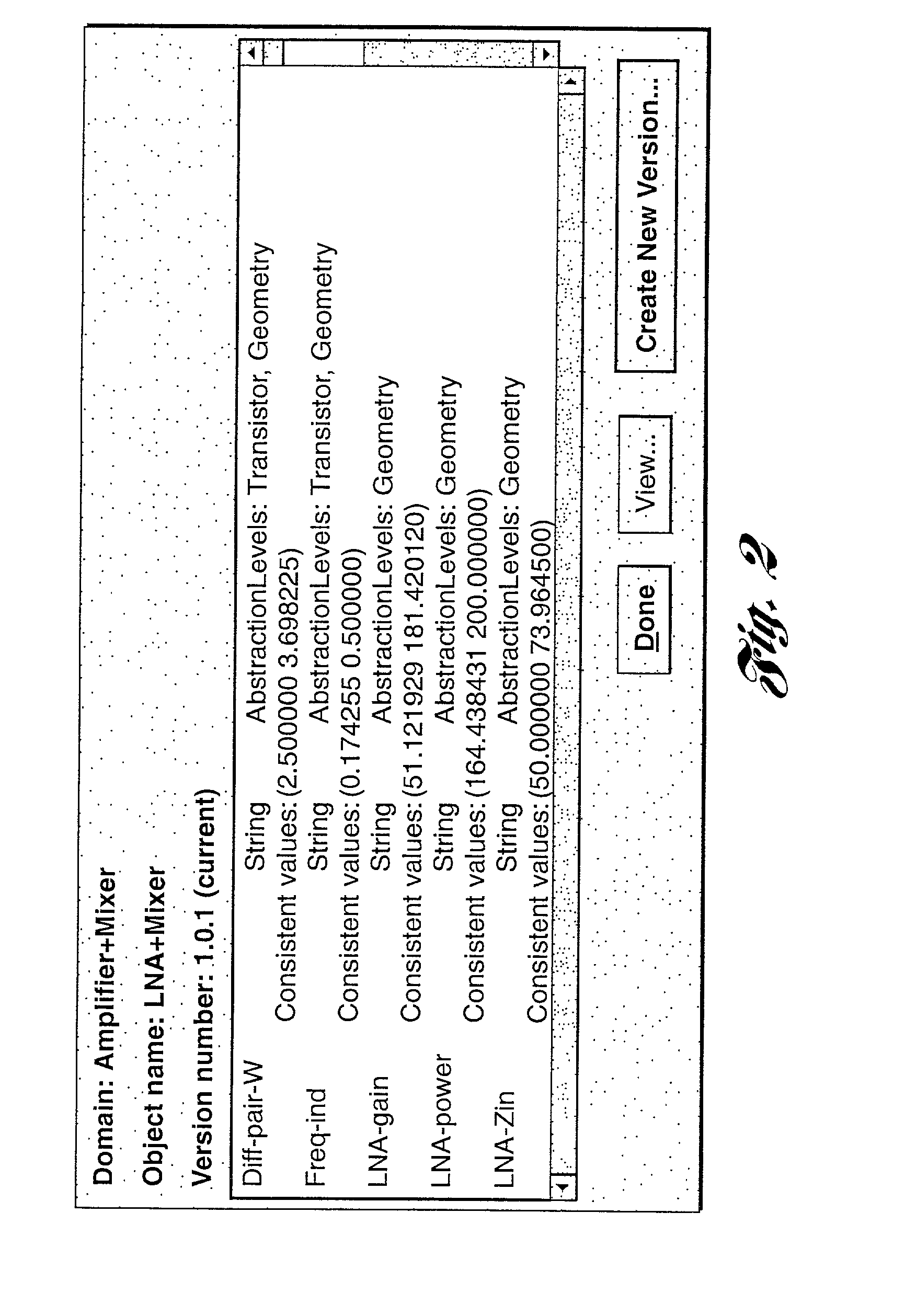Method and system for providing constraint-based guidance to a designer in a collaborative design environment
a collaborative design and constraint-based technology, applied in the direction of instrumentation, cad techniques, program control, etc., can solve the problems of conflict or constraint violation among multiple designers, increasing the number of designers, and increasing the workload of the design team, so as to reduce the number of conflicts or violations and facilitate the resolution of conflicts when they happen
- Summary
- Abstract
- Description
- Claims
- Application Information
AI Technical Summary
Benefits of technology
Problems solved by technology
Method used
Image
Examples
Embodiment Construction
[0035]The method and system of the present invention is described herein with respect to an Active Design Process Management (ADPM), a state-based design process model whereby team members receive constraint-based feedback (provided by the invention) on their operations and use it to apply design space search heuristics effectively. This guidance or feedback reduces and helps resolve conflicts.
Background
[0036]ADPM is based on a design process modeling framework that is built on previous work and emphasizes the role of constraints. In this framework, a design is characterized by a set of variables called properties. A design property, denoted by αi, is a variable that can take one or more values from a range Ei={vji,j=1, . . . , Niv}, where Niv is the total number of values a variable can achieve. Values may be numbers, strings, tuples, or complex descriptions. A property αi to which a single value has been assigned is said to be bound; otherwise, it is unbound with an implicit value...
PUM
 Login to View More
Login to View More Abstract
Description
Claims
Application Information
 Login to View More
Login to View More - R&D
- Intellectual Property
- Life Sciences
- Materials
- Tech Scout
- Unparalleled Data Quality
- Higher Quality Content
- 60% Fewer Hallucinations
Browse by: Latest US Patents, China's latest patents, Technical Efficacy Thesaurus, Application Domain, Technology Topic, Popular Technical Reports.
© 2025 PatSnap. All rights reserved.Legal|Privacy policy|Modern Slavery Act Transparency Statement|Sitemap|About US| Contact US: help@patsnap.com



